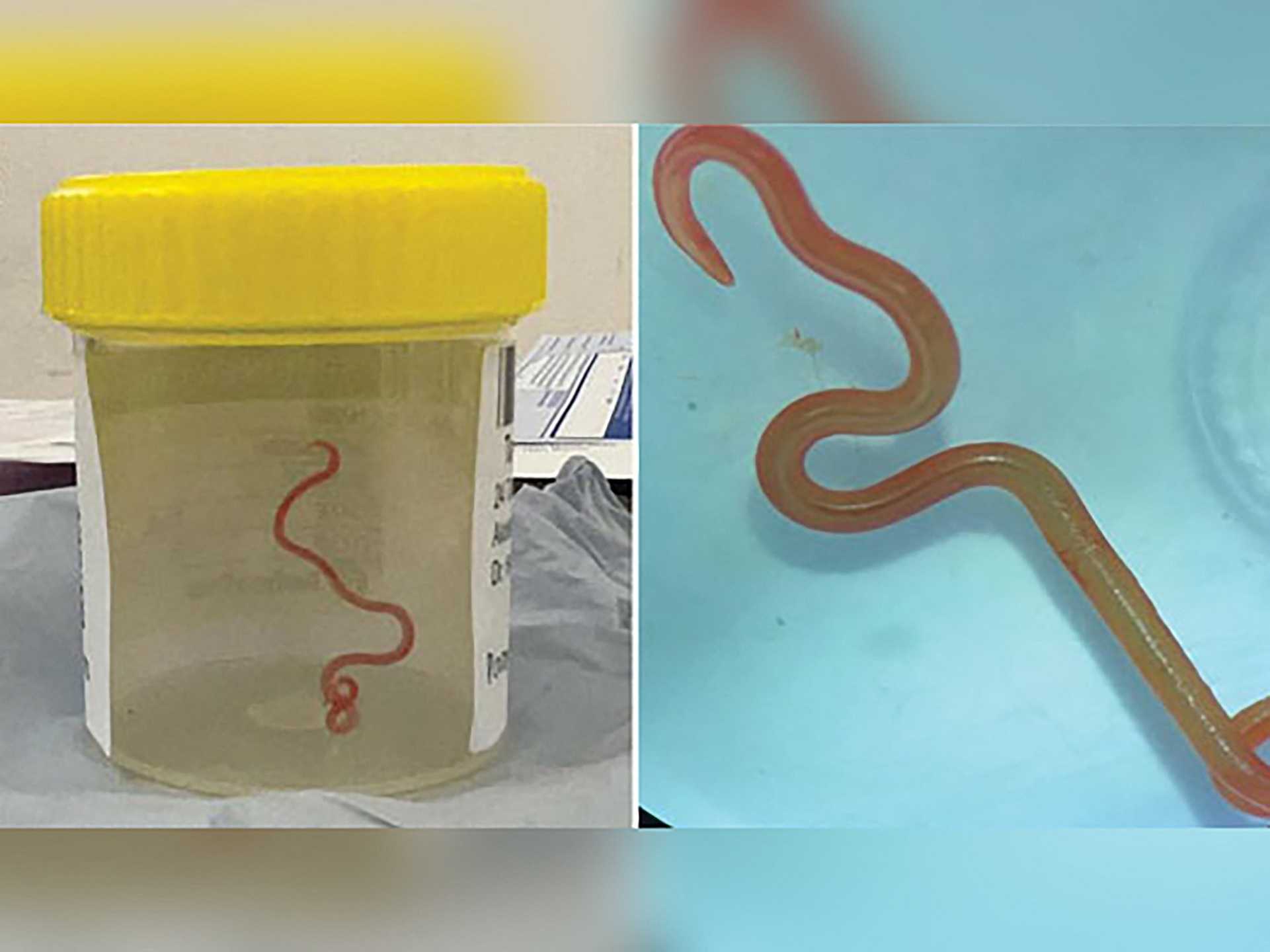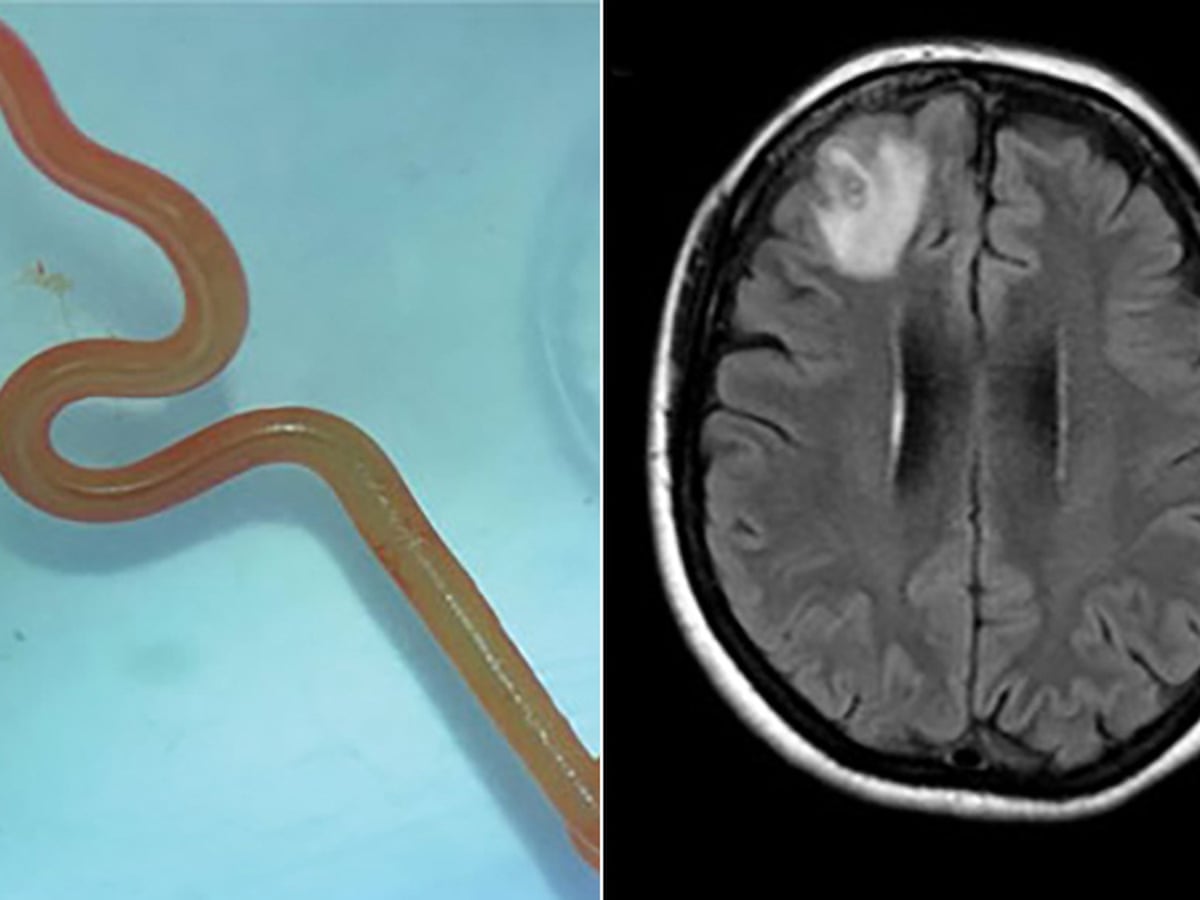Beware Unwashed Greens Foraging
"I just thought: 'What is that? It doesn't make an sense. But it's alive and moving.""It continued to move with vigour. We all [operating team] felt a bit sick.""I’ve only come across worms using my not-so-good gardening skills … I find them terrifying and this is not something I deal with at all."Surgeon Hari Priya Bandi, Canberra, Australia"This patient had been treated ... for what was a mystery illness that we thought ultimately was a immunological condition because we hadn't been able to find a parasite before and then out of nowhere, this big lump appeared in the frontal part of her brain.""Suddenly, with her [Bandi's] forceps, she's picking up this thing that's wriggling. She and everyone in that operating theatre were absolutely stunned.""When you operate on someone's brain and you take a biopsy of something, you never expect to encounter something living.""[It] was certainly something we'll never forget.""Because this was an unusual case at so many levels, we’re keeping a close eye on her [the patient] and keeping in touch.""We were able to send the live wiggling worm to him [animal parasitology expert at a governmental scientific research agency just 20 minutes away], and he was able to look at it and immediately identify it.""To our knowledge, this is also the first case to involve the brain of any mammalian species, human or otherwise."Sanjaya Senanayake, infectious diseases physician
 | |
| A supplied undated combined image obtained on August 28, 2023 shows a live "Ophidascaris robertsi" roundworm found in a 64-year-old Australian woman's brain. AAP Image/Supplied by Emerging Infectious Diseases via REUTERS |
Drs. Bandi and Senanayake co-authored an article relating to the medical case that was published in the most recent edition of the journal Emerging Infectious Diseases. Surgeon Bandi was performing a biopsy through a hole in the skull of the 64-year-old patient, when she extracted the parasite measuring eight centimetres, with the use of forceps. Now, it's known it was the larva of an Australian roundworm never before known as a human parasite.
Dr. Senanayake explained that in June of last year he was on hospital duty at the time. "I got a call saying: 'We've got a patient with an infection problem. We've just removed a live worm from this patient's brain'." Scans had indicated changes in her brain after being admitted to hospital with symptoms of forgetfulness and worsening depression over a period of three months. The biopsy was expected to reveal an abscess or a cancer.
The patient regained consciousness once the worm was extracted, and no negative consequences were noted. Six months later, her neuropsychiatric symptoms had improved, but not disappeared. The patient was cleared to return home shortly after the surgery, prescribed antiparasitic drugs, and had not since returned to hospital.

"There’s more opportunities for humans, domestic animals and wild animals to interact with each other and the vegetation that’s out there. So this is just another marker that more new infections will be seen in the future.""This Ophidascaris infection does not transmit between people, so it won’t cause a pandemic like SARS, COVID-19 or Ebola. However, the snake and parasite are found in other parts of the world, so it is likely that other cases will be recognized in coming years in other countries.""The other message from this case is about foraging. People who forage should wash their hands after touching foraged products. Any foraged material used for salads or cooking should also be thoroughly washed."Sanjaya Senanayake, professor, Australian National University
Labels: Australia, Brain Roundworm, Ophidascaris robertsi, Parasitical Infections

0 Comments:
Post a Comment
<< Home